Art & Exhibitions
Why Portraitist John Singer Sargent Cared So Much About Clothes
Five exceptional portraits at Tate Britain's "Sargent and Fashion" reveal the painter's eye for dress.
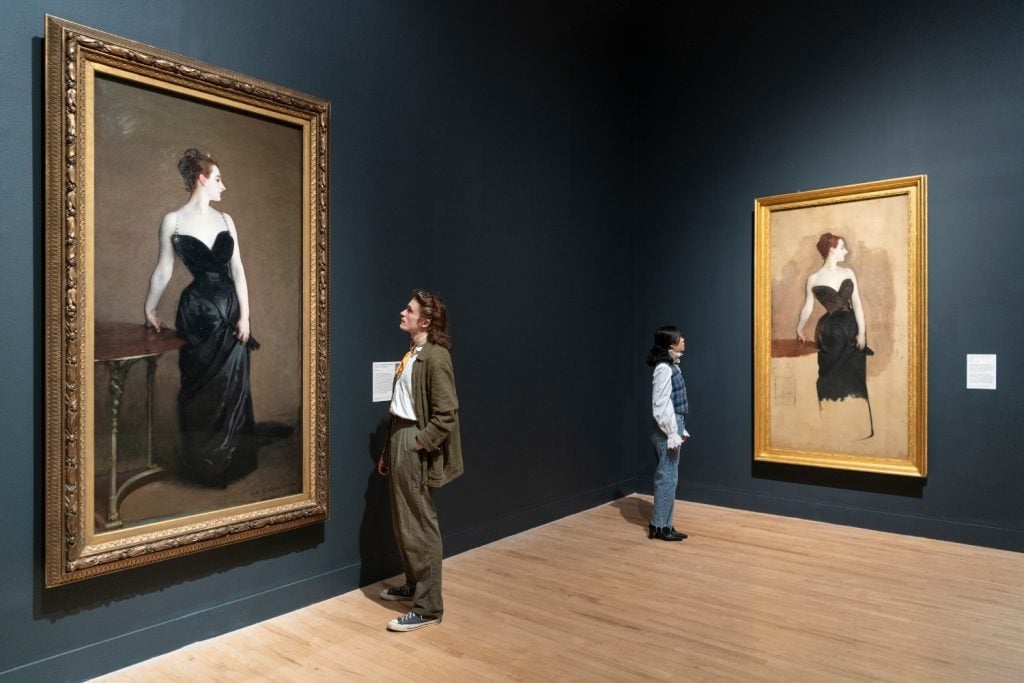
Endless rooms of 19th-century portraits might not sound like an immediately exciting prospect, even if they were the socialites, celebrities, and statesmen of their day. As soon as the name John Singer Sargent is mentioned, however, the exhibition is sure to be a blockbuster hit. The American painter’s widespread appeal has hardly been diminished since the days when the most fashionable members of society’s upper crust were vying to be immortalized by his brush.
Like an antidote to the avant-garde, Sargent’s paintings have a timeless charm owed to his uncanny ability to bring subjects to life on canvas. The latest survey of his work, “Sargent and Fashion,” has just opened at Tate Britain in London after a successful run at the MFA Boston. Walking through the galleries, one feels almost like they are stepping into a century-old conversation between fully sentient figures.
Faces full of character aside, Sargent’s subjects stand out for his richly resplendent renderings of their dress. Over the course of a lifetime, Sargent’s other interests inevitably shifted but his love of fashion and texture would remain a constant. Highlighting this pivotal part of his practice, the exhibition reunites the portraits with the original clothes worn or, in some cases, items of a similar type. Examples include the bright yellow dress donned by Spanish dancer La Carmencita and the magnificent black opera cloak worn by Lady Sassoon.
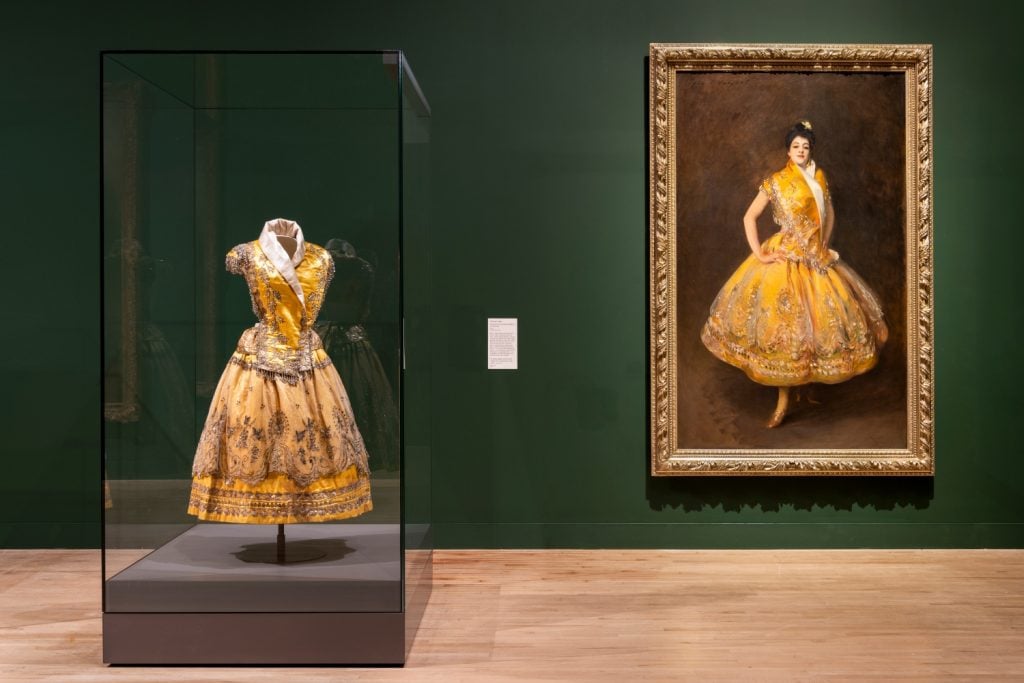
Installation view of “Sargent and Fashion” at Tate Britain showing La Carmencita (c. 1890). Photo: Larina Fernandes, © Tate.
“One thing that is striking to anyone that looks at his work is just how much he’s interested in the clothes,” said the show’s curator James Finch. “He’s evidently in love with the textures of clothing. The exhibition allows viewers to see what Sargent is doing in the process of painting: the details that he picks out, the things that he elides, and the process of transformation that is taking place.”
Though some critics have struggled to understand the crucial role that fashion plays in constructing identity, its significance was obvious to Sargent and many of his sitters. It is well known that he kept a repertoire of props for this purpose and made careful but often surprising adjustments to each sitter’s costume as he saw fit.
“We have enough evidence to give a clear sense that Sargent was very interventionist,” said Finch. “There was a class of patron who sought out this unexpected quality in the portrait and who left themselves open to working with an artist who would push back. If you knew exactly how you wanted to be depicted, you probably wouldn’t go to Sargent.”
“He wasn’t an artist that relied on preparatory drawings,” Finch added, “but really worked his ideas out on the canvas. He never really smoothed out those edges even when he was extremely in demand. Every portrait was still an experiment on some level.”
Artnet News asked Finch to pick out five portraits from the exhibition that exemplify Sargent’s meticulous fashioning of identity through dress.
Lady Helen Vincent
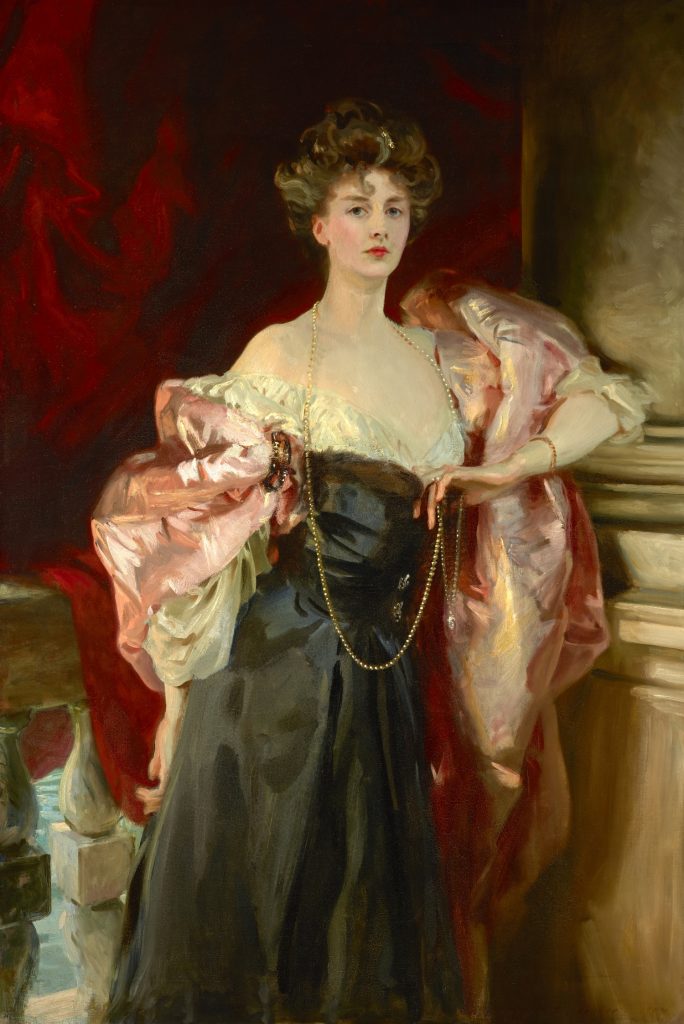
John Singer Sargent, Lady Helen Vincent, Viscountess d’Abernon (1904). Photo: Sean Pathasema, courtesy of Birmingham Museum of Art.
Sargent’s tendency to toy around with the details is apparent in his portrait of Lady Helen Vincent, a diarist and celebrated socialite who also worked as a nurse anaesthetist during World War I. Sargent painted her while she was staying in Venice just a few years before he would swear off portraits in 1907. Though Lady Helen was in fact wearing a white dress during their sessions, Sargent decided to change the color to black halfway through to produce a more immediately striking effect. Reflecting on this last minute swap, Sargent quipped that he was both a “painter and a dressmaker.”
“He would tailor what the sitter was wearing and make it look quite different,” said Finch. “Rather than simply documenting the latest styles he found a way to make them conform to his vision.”
Ellen Terry
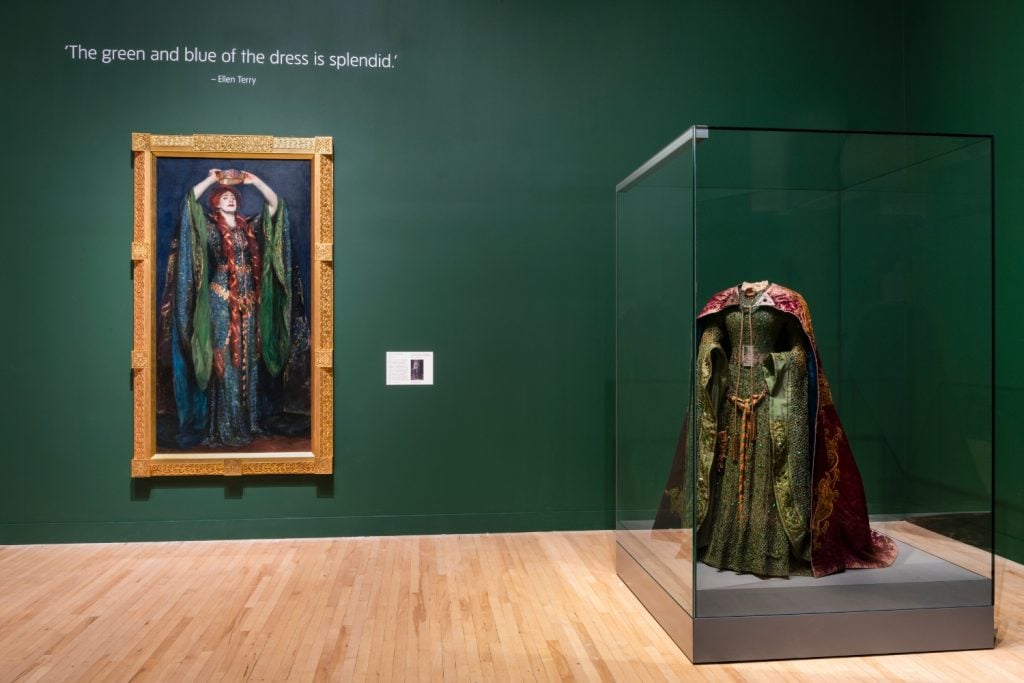
Installation view of “Sargent and Fashion” at Tate Britain showing Ellen Terry as Lady Macbeth (c. 1889). Photo: Larina Fernandes, © Tate.
When Sargent attended the opening night of Shakespeare’s Macbeth at the Lyceum Theatre in London in 1888, he was immediately moved to paint the actress Ellen Terry in the starring role of Lady Macbeth. She stood out on stage for her spectacular dress that was adorned with gold thread and 1,000 iridescent wings plucked from the green jewel beetle. When Terry described the dress to her daughter, she lamented that “the photographs give no idea of it at all, for it is in color that is so splendid.”
Luckily, Sargent wasted no time in asking to paint Terry. He had originally picked a pose that directly quoted the play but ended up having the star raise her arms over her head instead.
“The pose is devised to showcase the dress so that you really get a sense of how the sleeves and cloak fall in a very dramatic way,” said Finch. “Its a really extravagant outfit that shows the outsized personality of the performer.”
Surprisingly, Sargent also chose to make the dress more blue than it appears in real life on the advice of the Pre-Raphaelite painter Edward Burne-Jones.
Samuel Jean Pozzi
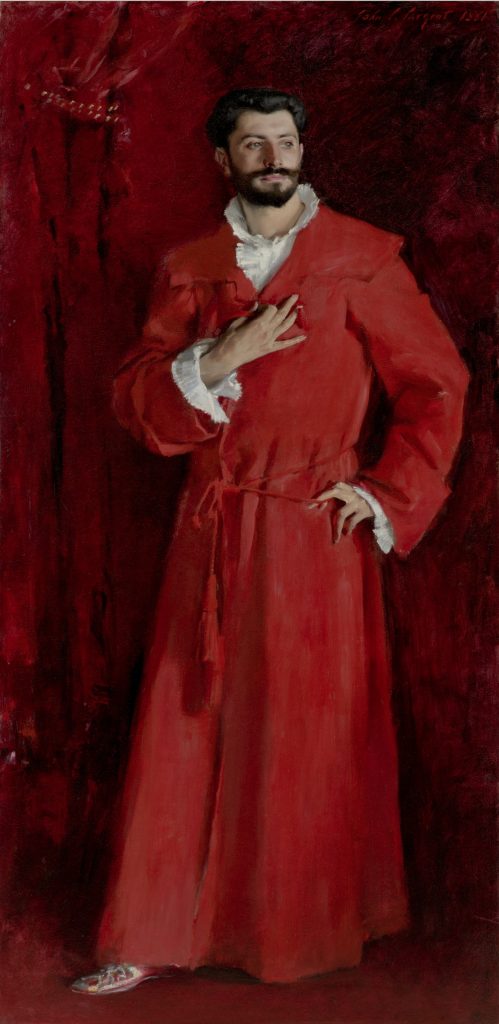
John Singer Sargent, Dr. Pozzi at Home (1881). Photo: The Armand Hammer Collection.
The French surgeon Samuel Jean Pozzi was a glamorous man about town who befriended notable cultural figures like Marcel Proust and Sarah Bernhardt, and had numerous affairs, including with Virginie Gautreau, the subject of Sargent’s most notorious Portrait of Madame X (1884).
Pozzi’s more dapper side comes across in a black-and-white photo from the time, but Sargent made the bold choice to reimagine him in a totally different guise. Striking an elegant pose, Pozzi is shown wearing a statement red dressing gown and Turkish slippers in a disarmingly intimate domestic space.
“Its an almost transgressive way of depicting him that says so much about subverting ideas of masculinity at that time,” said Finch.
Lady Hammersley
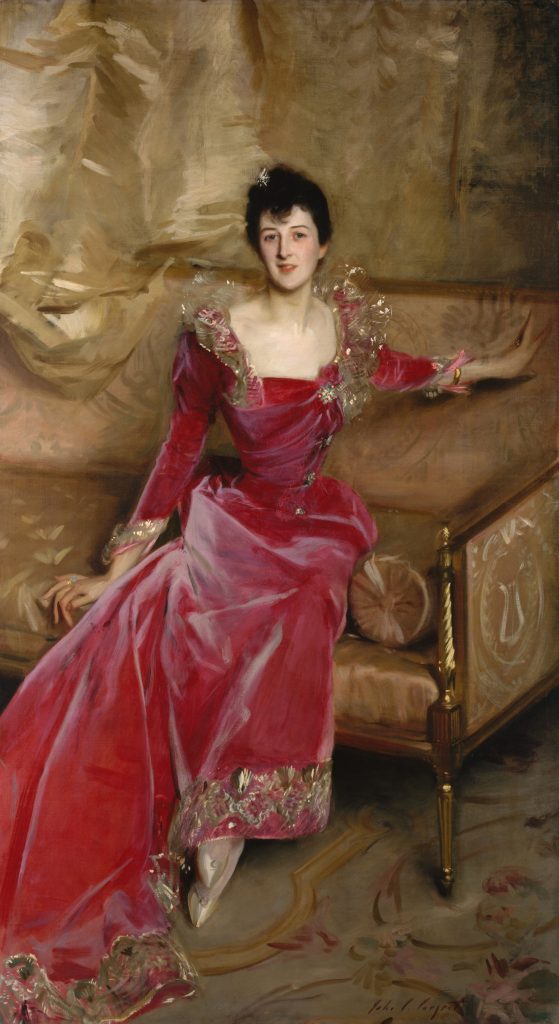
John Singer Sargent, Mrs. Hugh Hammersley (1892). Photo courtesy of The Metropolitan Museum of Art, New York, Gift of Mr. and Mrs. Douglass Campbell, in memory of Mrs. Richard E. Danielson, 1998.
The London hostess Mrs. Hammersley stands out against a decadent gold background for her cherry pink velvet gown. We know just how faithfully Sargent reproduced the color thanks to the swatch that Hammersley kept, which has since entered the the Metropolitan Museum of Art’s collection along with the painting.
“She clearly had such a strong sense of what it meant to sit for Sargent,” said Finch. “She was very interested in the arts and had a salon that was attended by Sargent, Walter Sickert, Augustus John, and other artists. She kept all her correspondence with Sargent and clearly had a sense of herself as her own archivist.”
The painting caused a stir when it was exhibited in 1893, with critics expressing discomfort at its ostentatious emphasis on dress. George Moore described the work as “the apotheosis of fashionable painting,” that would have as short a lifespan as any other trend. One day, he concluded, “many will turn with a shudder from its cold, material accomplishment.” Needless to say, it remains a widely admired portrait.
Eleanor O’Donnell Iselin
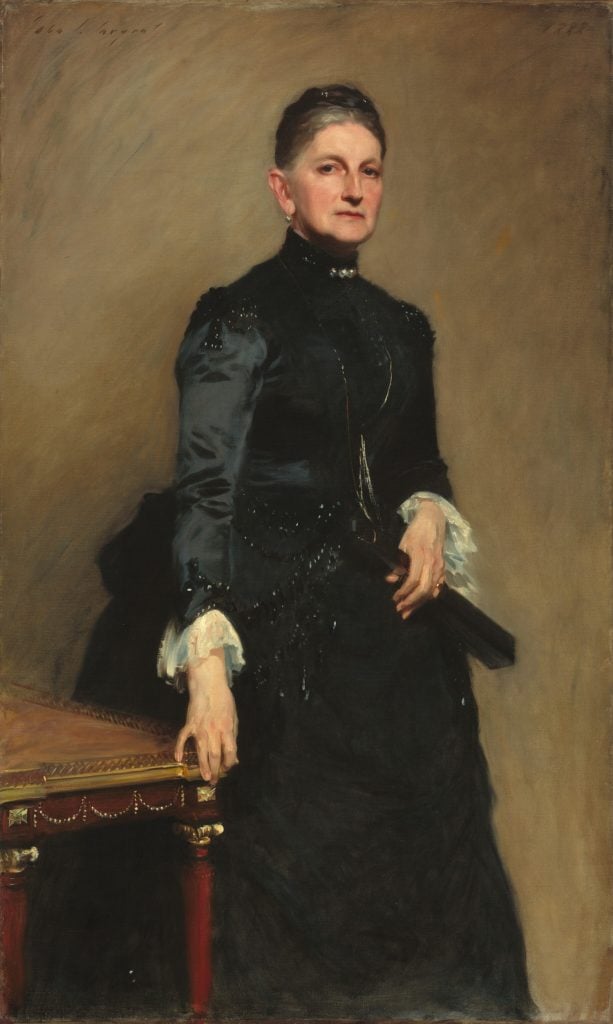
John Singer Sargent, Eleanora O’Donnell Iselin (Mrs. Adrian Iselin) (1888). Photo courtesy of National Gallery of Art, Washington.
When Eleanor O’Donnell Iselin first sat for Sargent, she must have known that he preferred an interventionist approach because she brought an array of exquisite dresses from Paris for him to choose from. Ever unpredictable, Sargent was immediately taken instead by the simple black day dress she had arrived in. According to at least one account, Iselin was disappointed by the artist’s choice, but we can only assume that he saw in the more austere outfit a fitting tribute to Iselin’s reportedly serious character.
“Its perhaps not what Iselin would have had in mind when she was first commissioning Sargent,” said Finch, but as always, “it would be a process of negotiation to reach the final outcome.”
“Sargent and Fashion” is on view at Tate Britain in London until July 7, 2024.





